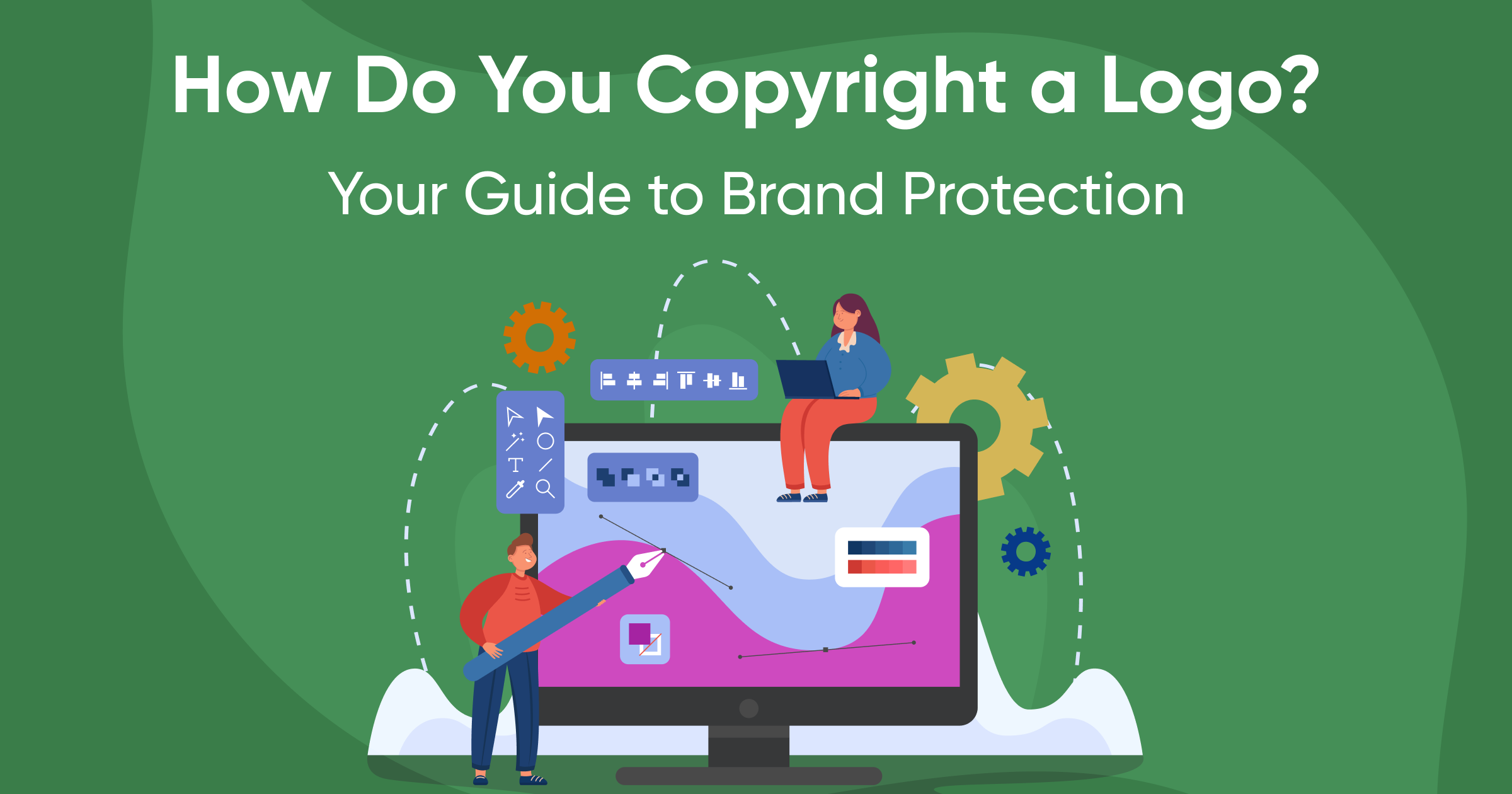Your logo is the face of your brand. It's a visual representation that embodies your company's values, mission, and identity. It's no surprise then, that you'd want to protect your logo from unauthorized use. Copyrighting a logo seems obvious, but there's more to the story. Buckle up because we're diving deep into the world of logo copyrighting and exploring the best ways to shield your brand identity.
Copyright vs. Trademark: Understanding the Difference
Before we get into the specifics of copyrighting a logo, let's clear up a common misconception. Copyright and trademark are two distinct forms of intellectual property protection, each serving a different purpose:
- Copyright: Protects original works of authorship, including artistic creations like logos. It safeguards the expression of ideas, not the ideas themselves. Think of it as shielding the unique way your logo is designed, not the generic concept it might represent.
- Trademark: Protects words, phrases, symbols, or designs that identify and distinguish the source of goods or services. It essentially grants you exclusive rights to use a particular logo in connection with your specific products or services, preventing others from using confusingly similar marks.
In a nutshell: Copyright protects the artistic aspects of your logo, while a trademark protects its use in the marketplace to identify your brand.
Can You Copyright a Logo?
The good news is, yes, you can copyright a logo! Here's the catch: Copyright protection arises automatically the moment your logo is created and "fixed" in a tangible form, like a digital file or a sketch on paper. You don't need to register it formally to gain basic copyright protection.
However, registering your copyright with the copyright office in your country strengthens your legal position. Here's why registration is important:
- Strengthens your claim: A registered copyright provides a public record of your ownership and the date of creation. This can be crucial evidence in case of infringement.
- Presumption of validity: A registered copyright grants a presumption of validity in court. This means the burden of proof shifts to the infringer to demonstrate why your copyright is not valid.
- Increased damages: In some jurisdictions, copyright registration allows you to seek statutory damages, which can be higher than actual damages suffered.
How to Copyright a Logo: A Streamlined Approach
Protecting your logo is vital for building brand trust and fending off copycats. While copyright offers a layer of security, we at Trademarkia can help you register copyrights. However, we can simplify the process and guide you through the initial steps.
Here's a breakdown on how to copyright a logo with our assistance:
1. Confirm Originality and Eligibility:
Before diving in, ensure your logo is one-of-a-kind. Avoid generic designs or close imitations of existing logos. We offer a free trademark search tool to check for potential conflicts with registered trademarks (different from copyrights). While it doesn't guarantee copyright clearance, it can highlight potential roadblocks.
2. Gather Your Materials:
Have your logo design readily available in a high-resolution format (like a JPEG or PNG file). Additionally, gather your basic information like name, address, and contact details.
3. Head to Our Copyright Section:
While we don't register copyrights directly, we offer a wealth of information and resources. Look for a section dedicated to copyright registration on our website. Here, you'll find detailed guides tailored to your specific country's copyright office procedures.
4. Utilize Our Copyright Assistance Tools:
We might provide tools like sample copyright application forms or instructions specific to your region. Leverage these resources to streamline the application process.
5. Prepare and File Your Application:
Following the instructions provided by your country's copyright office and our resources, fill out the copyright application form accurately. Include a clear description of your logo design and ensure all contact information is correct. We might offer additional tips or have a customer support team to answer any questions you have during this stage.
6. Submit and Track Your Application:
Once completed, pay the registration fee (set by your country's copyright office) and submit your application electronically or by mail, depending on your country's process. We might offer tracking tools or reminders to help you monitor the application's status.
7. Receive Your Copyright Registration:
After processing, the copyright office will review your application. If approved, you'll receive a copyright registration certificate. This certificate serves as official documentation of your copyright ownership.
Important Note: We provide legal advice. While our resources can guide you through the initial stages, consulting with an intellectual property attorney for personalized guidance is always recommended, especially for navigating complex copyright scenarios.
Beyond Our Support: Building a Strong Brand Defense
While copyrighting your logo is crucial, remember it's not the only line of defense. Here are some additional strategies to consider:
- Consider Trademarking Your Logo: Trademarking offers protection against someone using a similar logo for similar products or services, potentially offering a stronger defense than copyright alone.
- Maintain Brand Consistency: The more consistently you use your logo across platforms, the stronger your brand recognition becomes. This consistency helps consumers easily identify your brand and differentiate it from imitators.
- Document your logo creation process: Keep detailed records of your logo's design and development process. This documentation can be valuable evidence if you ever need to prove your ownership of the logo.
- Monitor Your Brand Online: Be proactive in searching for unauthorized use of your logo online. There are online tools and services available to assist you with this task.
By combining copyright protection with these additional strategies, you can create a robust brand defense system and safeguard your valuable brand identity.
Remember: Copyright laws can vary by country. It's always recommended to consult with an intellectual property attorney for specific guidance based on your location.
Conclusion: Safeguarding Your Brand Identity
Copyrighting your logo is a significant step in protecting your brand identity. By understanding the process and combining it with strategic brand management techniques, you can build a strong foundation for your brand's success. Remember, a well-protected logo is a valuable asset that fosters brand recognition, consumer trust, and ultimately, business growth.
So, the next time you see your logo proudly displayed, know that you've taken proactive steps to secure its place in the marketplace.
Frequently Asked Questions
Does copyright protect my logo's color scheme?
The answer depends. Simple color combinations generally don't receive copyright protection. However, highly distinctive color arrangements used in your logo design might gain some protection as part of the overall creative concept.
Can I copyright a logo with a slogan or tagline?
Potentially, but with some conditions:
- Separability: If the slogan can function independently of the logo design, it might require separate copyright registration.
- Originality: The slogan or tagline must meet the originality threshold for copyright protection.
How long does copyright protection for a logo last?
The duration varies by location. In the United States, for instance, copyright protection generally lasts for the author's life plus an additional 70 years.
What happens if someone infringes on my copyrighted logo?
If you discover unauthorized use of your logo, you have options:
- Cease and desist letter: A formal letter demanding the infringer stop using your logo.
- Negotiate a settlement: You can attempt to reach a financial agreement with the infringer.
- File a lawsuit: As a last resort, you can sue the infringer for copyright infringement. Consulting with an intellectual property lawyer is crucial before taking legal action.
Should I consider trademarking my logo in addition to copyrighting it?
Yes, consider trademarking your logo for stronger protection. Copyright protects the artistic expression of your logo, while a trademark protects its use in the marketplace to identify your brand. Ideally, both work together to solidify your brand identity.







